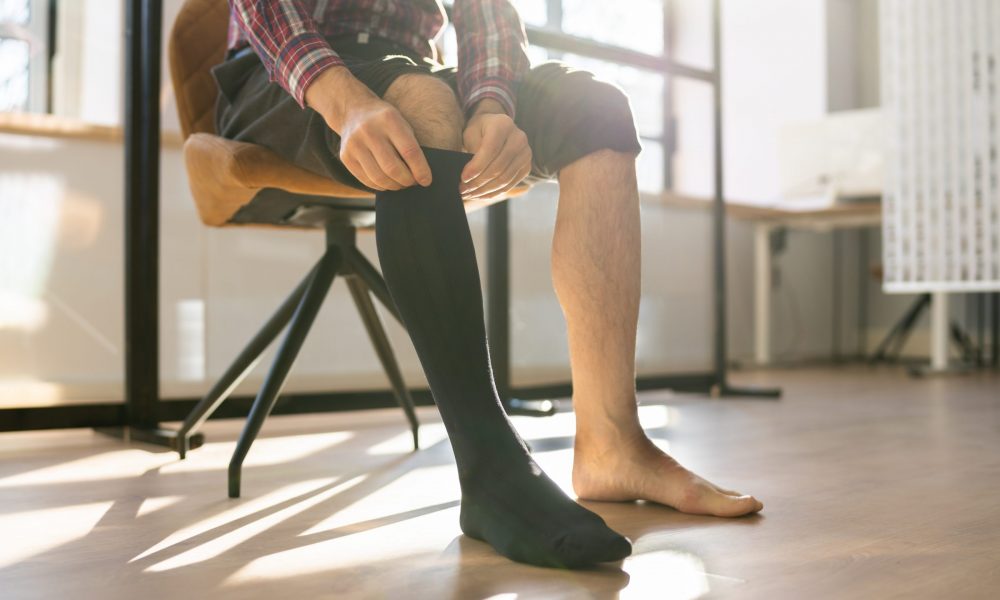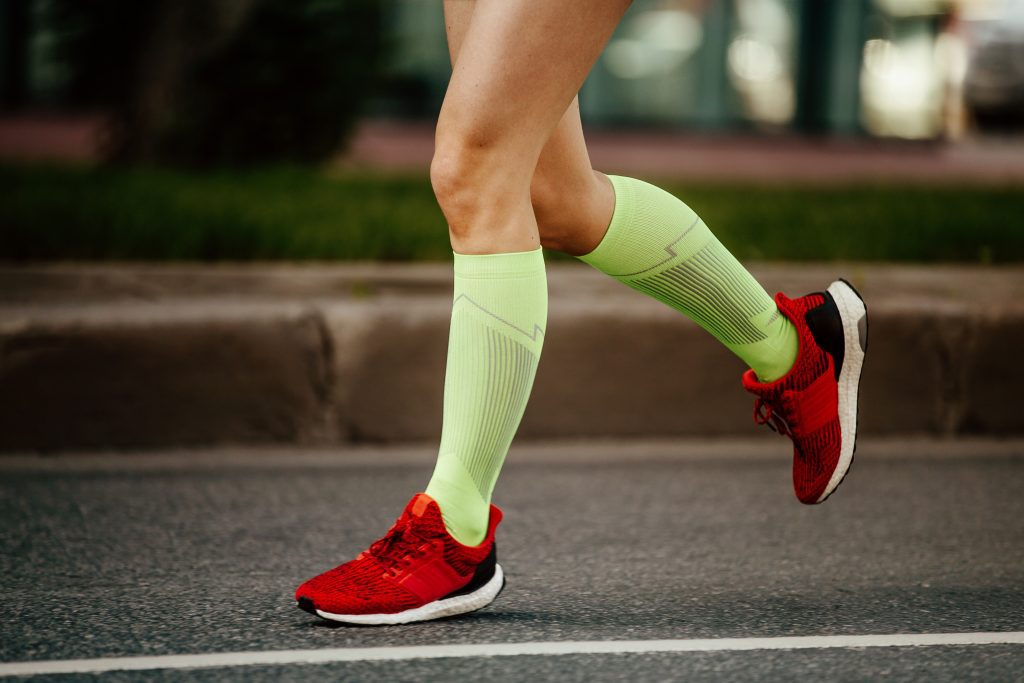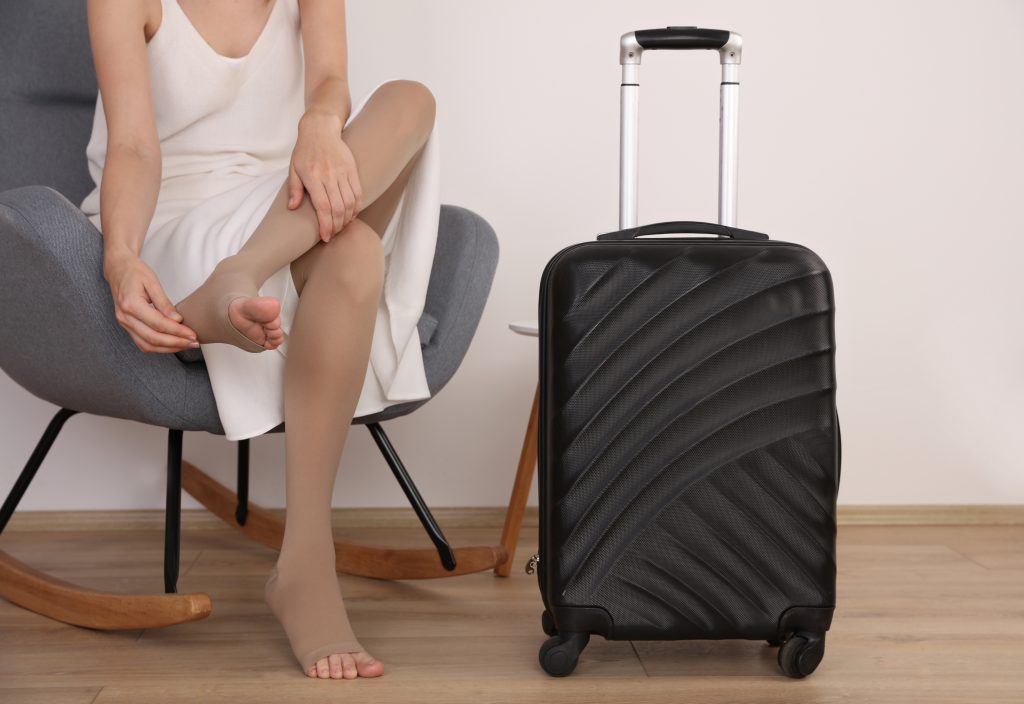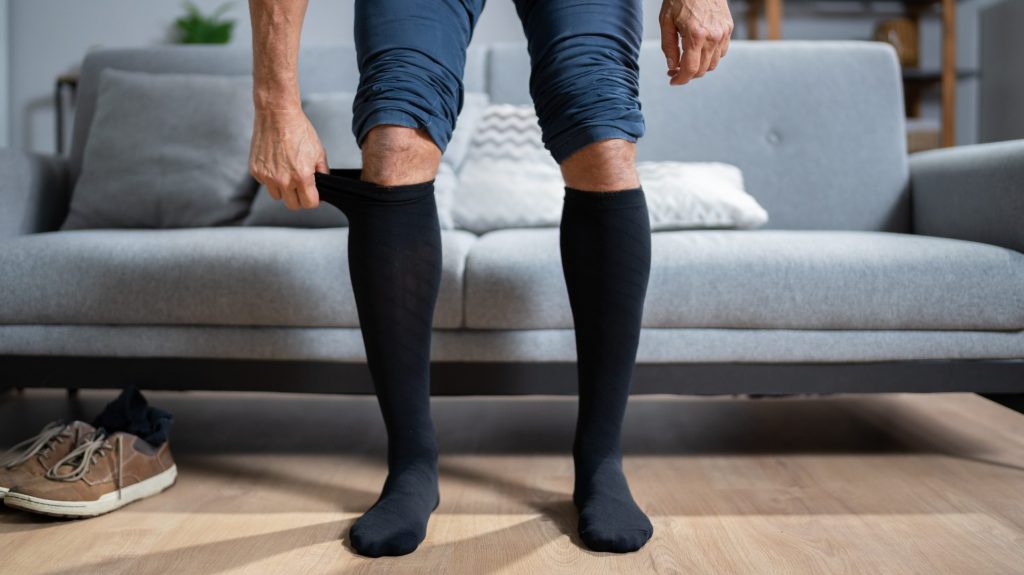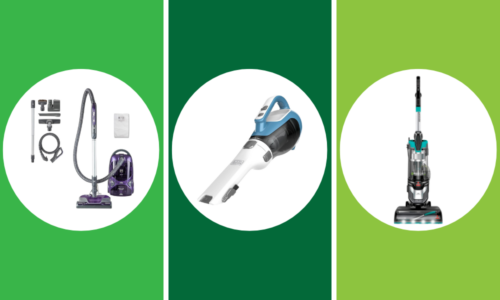There are lots of things you must remember to bring on a trip, such as your ID, medications and chargers for your devices. Perhaps there is one other item that you don’t usually bring with you — but should.
Experts say that wearing high-quality compression socks when traveling is something all adults should do.
How Compression Socks Work
Compression socks are designed to fit snugly, applying gentle pressure to your legs. The compression affects the tissues under the skin, supporting your veins and making it easier for blood to flow to the heart. Compression socks fit tightly against your leg and the slightly stretchy fabric maintains their shape.
“The key intention is to promote better blood circulation in the legs,” foot surgeon Dr. Georgeanne Botek told the Cleveland Clinic. “It’s a very practical and common thing. But, at the same time, it’s a very underutilized option.”
Benefits Of Wearing Compression Socks When Traveling
If you are on a lengthy trip, putting on a pair of compression socks can offer several advantages.
You can’t move much when you are seated on a plane or stuck in a car on a long road trip. The restricted position can compress blood vessels at your hips and behind your knees.
This can make you prone to deep vein thrombosis. However, some evidence suggests that compression socks can prevent dangerous blood clots from forming in your legs while traveling.
“Compression stockings create external pressure to lessen the gravity-related venous blood stagnation in the leg,” Dr. Kurtis Kim, a vascular surgeon, told the Washington Post.
Another effect of sitting in the same position for an extended period is swollen legs. Fluid retention in your legs below the knee, known as gravitational edema, is typically harmless, but it can cause discomfort.
“The elevation during flight does not have an effect on the swelling; however, it is the position of your body and gravity forcing fluids down to your lower half,” Derek Roach, owner of Flow Feet Orthopedics, told CNN. “Compression socks help to increase circulation, thus preventing swelling in your lower legs and feet.”
The blood flow that compression socks provide also helps ward off leg fatigue, which may limit your activity once you arrive at your destination. They can also prevent varicose veins, particularly if you travel often.
Choosing The Best Compression Socks
The best compression socks for you will largely depend on your needs. Generally speaking, non-medical compression socks are sufficient for traveling.
“Compression socks should be high quality; comfortable to wear; do not bunch up, which can cause blood flow restriction; or slide down, which indicates that they are too loose,” Dr. Bob Bacheler, managing director and flight nurse at Flying Angels, told CNN.
They come in a range of sizes, lengths, strengths and styles. Look to unique features to decide which compression socks are best for you.
For example, some have moisture-wicking properties to help your feet stay dry. Others have zone-specific compression to help prevent blisters and skin irritation. And some compression socks come in cute colors and patterns.
Check out this compression sock buying guide for a collection of some of the top brands and styles available.
Compression socks are tighter than regular socks, which can cause some people to worry that they cut off circulation.
“For 99% of people, that’s just not the case,” Dr. Botek told the Cleveland Clinic. “The only place issues might crop up is for unhealthy individuals who have severe reduction of their heart function or they have a severe peripheral arterial disease where they have poor blood flow between either the feet or legs and the heart.
If you have peripheral artery disease or diabetes, check with your doctor before wearing compression socks.

